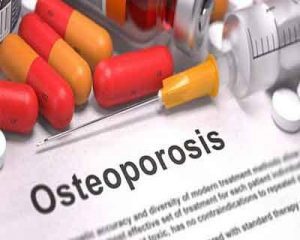- Home
- Editorial
- News
- Practice Guidelines
- Anesthesiology Guidelines
- Cancer Guidelines
- Cardiac Sciences Guidelines
- Critical Care Guidelines
- Dentistry Guidelines
- Dermatology Guidelines
- Diabetes and Endo Guidelines
- Diagnostics Guidelines
- ENT Guidelines
- Featured Practice Guidelines
- Gastroenterology Guidelines
- Geriatrics Guidelines
- Medicine Guidelines
- Nephrology Guidelines
- Neurosciences Guidelines
- Obs and Gynae Guidelines
- Ophthalmology Guidelines
- Orthopaedics Guidelines
- Paediatrics Guidelines
- Psychiatry Guidelines
- Pulmonology Guidelines
- Radiology Guidelines
- Surgery Guidelines
- Urology Guidelines
Treat all high risk postmenopausal women with osteoporosis medicines: Endocrine Society

Treat all high-risk postmenopausal women for osteoporosis with medicines, says new Endocrine Society Guidelines.
According to the latest Clinical Practice Guidelines issued by the Endocrine Society, the benefits of treating osteoporosis in postmenopausal women outweigh the perceived risks. The Society introduced the guideline during a news conference on Monday at ENDO 2019, its annual meeting in New Orleans, La.
The guideline, titled “Pharmacological Management of Osteoporosis in Postmenopausal Women: An Endocrine Society Clinical Practice Guideline,” was published online and will appear in the May 2019 print issue of The Journal of Clinical Endocrinology & Metabolism (JCEM), a publication of the Endocrine Society. The guideline provides evidence for the benefits of treating postmenopausal women with osteoporosis. The recommendations cover the newest, most effective medication options and answer patient questions regarding the duration of therapy and monitoring.
One in two postmenopausal women will break a bone due to osteoporosis in their lifetime, making them at high risk for subsequent fractures, yet many of these women do not receive treatment. With ongoing reports of atypical femoral fractures and osteonecrosis of the jaw, patients and providers are uncertain about the benefits and risks of treating osteoporosis. In fact, there has been a decline in the use of bisphosphonates and an increase in hip fractures among postmenopausal women.
“There is a considerable gap in the treatment of osteoporosis. Most women will not take anti-osteoporosis therapies despite their efficacy, and those that do often stop. As a result, the rate of hip fractures has leveled off and may be increasing. In addition, bone density screening has declined precipitously,” said Clifford J. Rosen, M.D., director, Center for Clinical and Translational Research at the Maine Medical Center Research Institute in Scarborough. Rosen chaired the writing committee that developed the guideline.
“We hope our guideline will not only improve patient care but provide confidence in treatment,” he said.
Recommendations from the guidelines which were derived from two evidence-based reviews include:
- Treating postmenopausal women at high risk of fractures, especially those who have experienced a recent fracture, with pharmacological therapies, as the benefits outweigh the risks.
- Prescribing initial treatment with bisphosphonates to reduce fracture risk.
- Reassessing fracture risk after three to five years in women taking bisphosphonates. Women who remain at high risk of fractures should continue therapy, while those who are at low-to-moderate risk of fractures should be considered for a “bisphosphonate holiday.”
- Using denosumab as an alternative to bisphosphonates for the initial treatment of high-risk individuals.
For detailed guideline follow the link: https://www.endocrine.org/guidelines-and-clinical-practice/clinical-practice-guidelines/osteoporosis-in-postmenopausal-women

Disclaimer: This site is primarily intended for healthcare professionals. Any content/information on this website does not replace the advice of medical and/or health professionals and should not be construed as medical/diagnostic advice/endorsement or prescription. Use of this site is subject to our terms of use, privacy policy, advertisement policy. © 2020 Minerva Medical Treatment Pvt Ltd